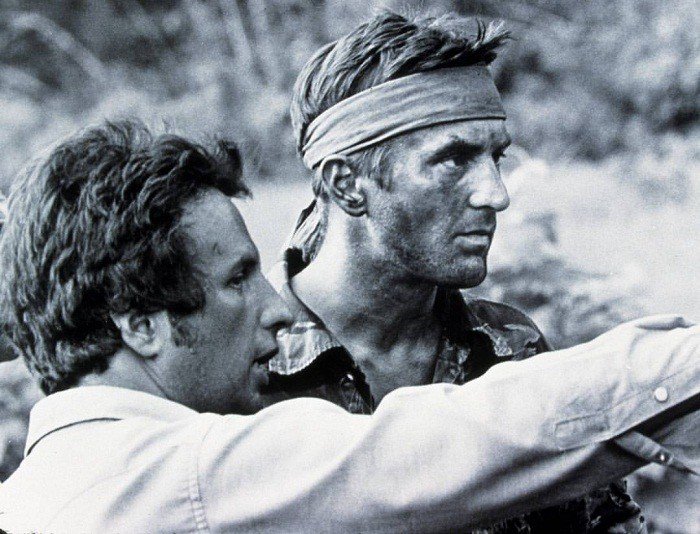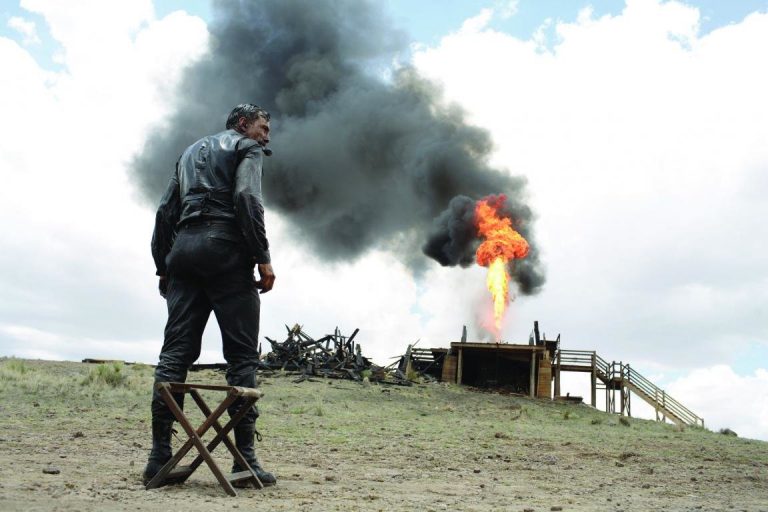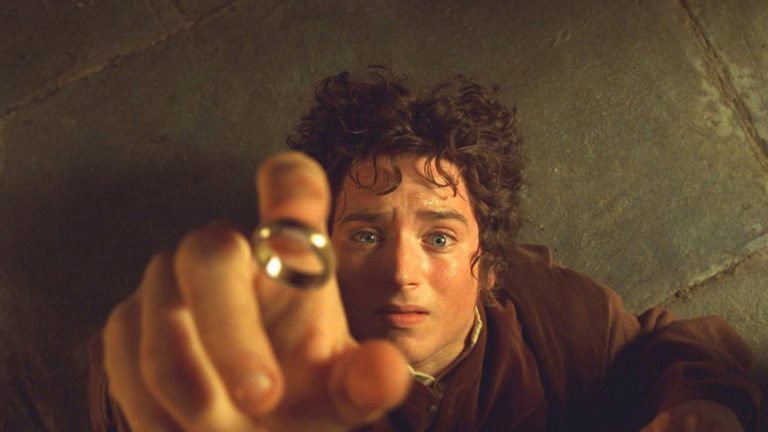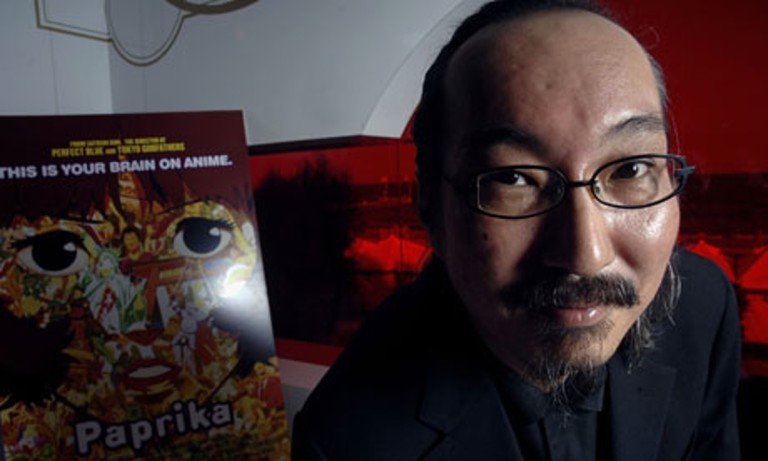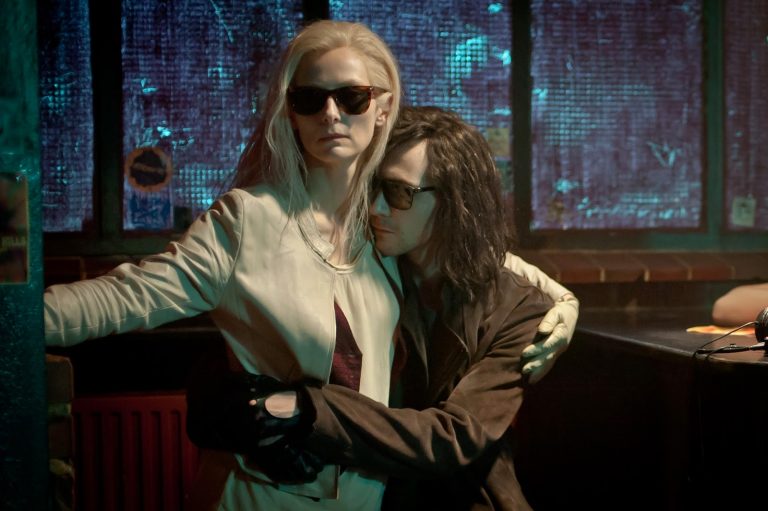“Anora” is a significant outlier in Sean Baker’s filmography. Commonly described as ‘America’s neo-realist,’ Baker opts to penetrate the upper class, using the titular character Anora as somewhat of a Trojan horse. In previous works, specifically, “The Florida Project” and “Prince of Broadway,” Baker has had a particular focus on the hidden homeless and the social working class and their struggles therein.
“Anora” has a sense of disregard for these particular areas and gets swept up in the chaos and grandeur of the high-class party lifestyle. Instead, “Anora” places very minimal focus on the lower class. Besides her house being in close relation to the subway line, nothing more is said about her living conditions or daily life. We are only shown Ani’s hustle and romantic entanglements, which reduce her character to little more than a commodity, existing solely to serve the desires of men.
Auteur Theory and Sean Baker’s Evolution
Looking at Baker as an auteur through Andrew Sarris’ model of auteur theory, there is a clear correlation to all three points on the model. His technical prowess has a little question, having written and edited all of his films and even taking up roles as a camera operator and cinematographer in films like “Tangerine.”
This technical mastery enables him to refine his personal style, particularly in his portrayal of characters who are often difficult, stubborn, or even unlikable at times, yet still retain a certain charm and charisma—an element that remains strikingly evident in the character of Anora. Throughout all previous work, Baker has had little to no budget, never stemming past 2 million USD, and has made great use of resources and technical innovation. The low budget gave him the freedom to portray working-class America and tell the stories of those often overlooked and disregarded, who would typically be ignored by the elite circles of Hollywood.
Although Baker has transitioned to mid-budget filmmaking with Anora, his commitment to grassroots filmmaking remains, albeit feeling more distant. His moral discourse is noticeably more ambiguous, and while his depiction of sex work still retains its graphic nature, it takes on a more glamorized tone. This portrayal is handled with less maturity and sensitivity than one might typically expect from him.
Opening Sequence setting the Voyeuristic tone
The film opens with a lingering dolly shot over several private dances, drawing us into the world of sex work. The camera settles on the titular character, gradually zooming in on her face as she dances, with the credits flashing across the screen. An upbeat remix of Take That’s “Greatest Day” fills the air, immersing us in the vibrant nightclub atmosphere before the film abruptly transitions into the main narrative. This opening shot, whilst a good method for getting names onto the big screen, serves little other purpose than to use and reveal the beauty of Anora played by Mikey Madison. It puts the viewer in the position of a patron, somebody who’s bought a private dance and it’s now her role to fulfill it.
It grants us an immediate voyeuristic look into her world and sets the tone for how we should perceive and consume the film from there on out. Despite the name of the film being the same as the character, we actually have very little relation to her throughout, remaining rather objective, we only tend to watch as we follow her and aren’t granted many intimate details of her life besides a general idea of the place she lives, and a familiar grounding of her workplace. A very relevant quote from Laura Mulvey summarises this opening scene. “the film opens with the woman as an object of the combined gaze of the spectator and all the male protagonists in the film. She is isolated, glamorous, on display, sexualized.” This quote also helps us realize this male-centric perspective the film will expand upon.
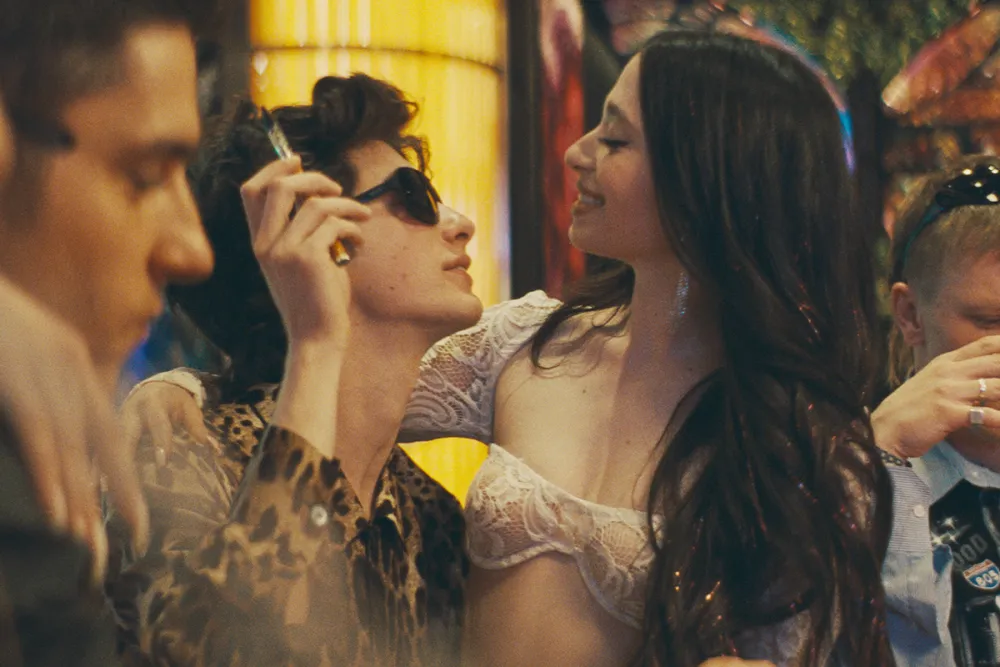
Gender Dynamics and Representation of Nudity
The use of female nudity in the film in comparison to the use of male nudity is a stark contrast. It reminds me of the quote “In their traditional exhibitionist role, women are simultaneously looked at and displayed, with their appearance coded for strong visual and erotic impact so that they can be said to connote to-be-looked-at-ness.” This is particularly relevant to the film, in which Anora is frequently shown in various sexual circumstances, including an erotic dance, performed for Ivan, who is somewhat of a surrogate for the audience’s perspective, which is cut together similarly to that of music video, glamorizing and eroticizing Anora. Meanwhile, Ivan passively sits back, laughs, and interacts through various reactions, mimicking the actions of the audience, who will also laugh and react to Anora in similar circumstances.
Despite this dance being choreographed by Mikey Madison herself, it serves very little in the idea of empowering the female audience. Although Baker allows his women to have a say on set and to explore their characters’ interactions and scenes freely, the placement and structure of the dance serve very little purpose outside of fan service. Since the scene has nothing to do with the narrative, besides it being an in-between, somewhat of a cutaway, or some B roll footage, linking it from one moment to the next, its use is questionable.
Baker’s role as editor is to connect the strings of the narrative to create a compelling and cohesive story. So his selection of the dance and its place within Anora’s framework is still his final say. Regardless of his own working practices, and his efforts to create a comfortable environment for women working on the film, his harmful choices in cutting together the scene are his responsibility as the auteur. Significantly damaging the potentially positive messaging he’d wish to display.
In comparison, the incredibly infrequent glimpses into male nudity in the film, are entirely played off for laughs. This immature perspective on nudity calls into question the film’s integrity, and Baker’s status as an auteur. The dance sequence was composed and choreographed by Mikey Madison, though under the instruction to do so from Baker, alleviating some of the pressure in the nature of the dance from his shoulders, although the dance’s place and relevance in the film lies solely in his hands as writer and director.
Its relevance in the film comes across as something akin to fan service, something the audience has come to pay for, especially since the dance was used heavily in promotional material in the film. This seemingly makes its purpose to serve and entertain the male crowd, to keep them engaged and satisfied before it can move onto the more trying and difficult circumstances of the narrative.
Sex Positivity vs. Harmful Representation
Despite my earlier remarks, I believe Baker’s intentions are genuinely well-meaning, and he ensures that the environment on set prioritizes the actors’ comfort and safety above all else. He has them as their own intimacy coordinators and allows them to choreograph some of their own scenes involving stunts, or allowing them to use their own ideas of how a scene should progress. However, despite good intentions, Baker’s role as the film’s editor and the positioning of these elements within the narrative creates a questionable sense of their purpose.
He states, in an interview with Kino.dk, that elements of his films, including the heightened use of sex, and sex workers, are in response to what he feels are topics that aren’t prevalent enough in American and Hollywood cinema. It is widely believed, based on multiple polls, that younger generations, particularly Gen Z, show less interest in including sexual content in their stories. This trend is attributed to the increased accessibility of pornography and a desire to keep these two elements separate. Baker argues that if sex serves a clear purpose and intention within a story, there’s no reason to shy away from it or fear its inclusion. This perspective aligns with his belief that sex work and the broader sex industry should be normalized and openly discussed.
Sex scenes, overall in Hollywood are indeed significantly fewer and further between than they have been in the past, although the ones that do make the cut, are considerably more graphic than before. These responses in contrast to the Hollywood standard usually appear from low to mid-budget films, the recent examples are “Saltburn” and “May December.” While “Saltburn” aims to shock its audience by using sex as a tool for horror, “Anora” takes a different approach, striving to normalize and celebrate sex as a natural and joyful aspect of life. However, despite these efforts to promote a more sex-positive standard, it’s arguable that portraying sex and the sex industry within a context where a woman can be easily degraded or diminished risks being more harmful than empowering to women viewers.
Anora falls short of being as sex-positive as it aspires to be. In intense, destructive, and violent scenes like the house invasion, Ani is often placed in sexual positions, drawing a troubling connection between sex and violence. Most of the sex scenes in Anora depict her as a provider of a ‘service,’ working to satisfy her male counterpart in exchange for monetary gain. This portrayal undermines the idea of sex as a mutual source of joy and positivity, instead framing it as a one-sided act where the man derives pleasure and the woman is reduced to an object of satisfaction.
This representation is especially harmful to the female audience, as it fosters a sense of disgust toward their own bodies. By identifying with Anora, the sole female lead, viewers may feel isolated and objectified, mirroring Anora’s own experiences. Instead of empowering women or creating a sense of safety and comfort in how their bodies are portrayed on screen, the film offers a narrative built at their expense, ultimately causing psychological harm.
Male Representation and Critique
An argument that could be presented is that the film and filmmakers’ intention is aimed to look downwardly against men, as the dominant perpetrators of sexual violence. Though the film does handle these subjects to some degree, portraying Ivan as an immature little boy with severe parental issues, and the goons Toros, and Garnick as bumbling buffoons, barely able to keep control. This is still not enough to convince the audience in favor of looking down upon the men, as the majority of audiences still see Igor as a positive love interest in comparison to Ivan, judging from questions presented by Moderator Jeremy O’Harris at the SAG-AFTRA Foundation this year.
While the film attempts to distance itself from the “not all men” narrative by revealing a darker side of Igor, where his violent tendencies are provoked by Ani, it falls short of effectively highlighting the danger Ani faces from these men throughout the story. Ani is often depicted as a troublemaker, a burden to the film’s male characters, which weakens the portrayal of toxic masculinity and prevents the film from deeply challenging the audience, especially male viewers, to confront the harmful behaviors and attitudes towards women.
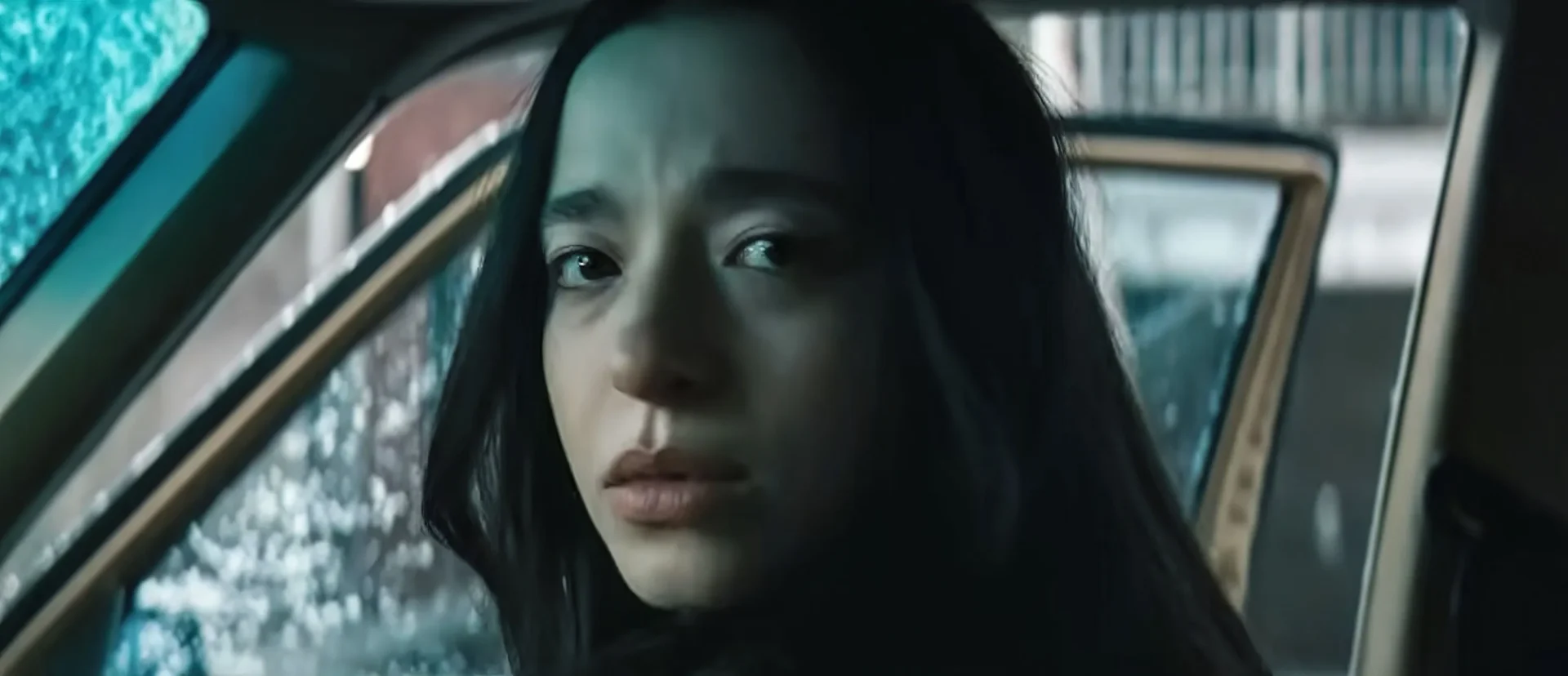
For Gen Z ‘Anora’ might be a little ‘Out of Touch’
As a whole, “Anora” could be perceived as out of touch or is made with the philosophies of a far-gone time. Baker continues to try and revive the historical medium of film stock, prioritizing it over digital. “Anora” also reflects Baker’s age and his tendency to cling to a more classical, traditional approach to filmmaking. Despite his modern, avant-garde twists as an auteur, he inadvertently includes slurs and punchlines that may not sit well with younger generations, particularly in light of the growing movement toward a more respectful and inclusive attitude toward LGBT communities. The use of the word ‘Faggot’ is frequent throughout. In one of the final conversation scenes between Ani and Igor, what is meant to be set up as a dramatic telling of Igor’s true character, before it is shown to us in the ending, Ani accuses Igor of being a rapist and a predator.
When he claims that he ‘is not a rapist’, she responds with ‘No. Because you’re a faggot-ass bitch.’ This out-of-touch punchline, though comedic maybe to an older crowd, further removes the younger generation from connecting with any empowering messaging Baker could be trying to put forth. The use of the slur is unnecessary and only makes the film’s most sympathetic character more unlikable. It leaves a sour taste, to what could be a most impactful scene. It marks a fundamental issue with Baker’s writing, and the film’s comedy, in that it’s often mistimed and misguided. This final punchline placed in contrast with the ending that follows, creates a much stronger jolt and a more aggressive whiplash.
It doesn’t allow the audience time to be thoughtful, or to look inwardly towards themselves. The exhausting whirlwind of emotions and action, before cutting it straight down to a final prolonged and harsh ending surprises a more casual audience. It doesn’t allow them to question themselves and their responsibility of facilitating the male gaze, or toxic masculinity. Instead of considering how their actions harm female empowerment and allow the objectification of women, rather they leave confused, dazed, and wondering where all the fun went –- a devastating opposite to Baker’s intentions.
Does ‘Anora’ Still Find a Place in Feminist Cinema?
Anora’s place in feminist cinema will continue to be debated as time progresses. As one of the major films of the year, it carries an increased responsibility to offer a healthy and empowering representation of feminism, something it fails to achieve repeatedly throughout its runtime. As the winner of the Palme d’Or and a frontrunner for Best Picture at the Oscars, the film raises important questions about Hollywood’s role in promoting feminist ideologies and holds Sean Baker, as a progressive male filmmaker, accountable for the kind of narratives being presented.
Instead of giving more space to female filmmakers to share their personal stories of femininity, Anora, and its male director, Sean Baker, are placed at the center of cultural conversation, speaking to a broader audience. While this is a positive development for mid-budget and independent filmmaking, it inadvertently poses a threat to female voices in Hollywood. It risks overshadowing their potential to move feminism forward and create a more balanced, authentic representation of women in the future.


